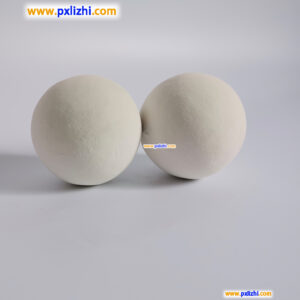
。
# Inert Ceramic Ball Applications in Industrial Processes
## Introduction to Inert Ceramic Balls
Inert ceramic balls are widely used in various industrial processes due to their excellent chemical stability, high mechanical strength, and thermal resistance. These small spherical ceramic materials play a crucial role in supporting catalysts, distributing gases and liquids, and protecting more expensive catalyst materials in reactors.
Keyword: inert ceramic ball
## Key Properties of Inert Ceramic Balls
The effectiveness of inert ceramic balls in industrial applications stems from their unique properties:
– High temperature resistance
– Excellent chemical inertness
– Superior mechanical strength
– Low water absorption
– Good thermal shock resistance
– Uniform size and shape
## Major Industrial Applications
### 1. Petrochemical Industry
In the petrochemical sector, inert ceramic balls serve as catalyst supports and bed support media in reactors. They help distribute reactants evenly across the catalyst bed while preventing catalyst particles from clogging the reactor’s distribution system.
### 2. Chemical Processing
Chemical plants utilize these ceramic balls in:
– Distillation columns
– Absorption towers
– Reactor internals
– Gas treatment systems
Their chemical inertness makes them ideal for handling corrosive substances.
### 3. Environmental Protection
Inert ceramic balls find applications in:
– Waste gas treatment systems
– Wastewater purification
– Desulfurization processes
– Denitrification equipment
### 4. Refining Processes
Refineries use these ceramic balls in:
– Hydroprocessing units
– Reforming units
– Isomerization processes
– Alkylation units
## Benefits in Industrial Processes
The use of inert ceramic balls offers numerous advantages:
– Extended catalyst life by preventing particle migration
– Improved flow distribution in reactors
– Reduced pressure drop across catalyst beds
– Enhanced heat transfer efficiency
– Lower maintenance costs
– Increased process reliability
## Selection Considerations
When choosing inert ceramic balls for industrial applications, consider:
– Operating temperature range
– Chemical environment
– Mechanical load requirements
– Size specifications
– Purity requirements
– Thermal shock resistance needs
## Future Trends
The demand for inert ceramic balls continues to grow as industries seek more efficient and environmentally friendly processes. Advancements in ceramic technology are leading to:
– Higher purity materials
– Improved thermal properties
– More precise size control
– Customized formulations for specific applications
As industrial processes become more sophisticated, the role of inert ceramic balls as essential components in chemical reactors and processing equipment will only increase in importance.